Introduction
Our use of forestry resources has seen an increase in efficiency aimed at standardizing wood, a material that is inherently non-standard and heterogeneous by nature. However, the byproducts generated from this process are predominantly used for energy through combustion rather than being transformed into useful products. As more wood products are expected in construction, it is crucial to reassess and adjust our methods of producing and designing with wood – starting from its non-standard state.
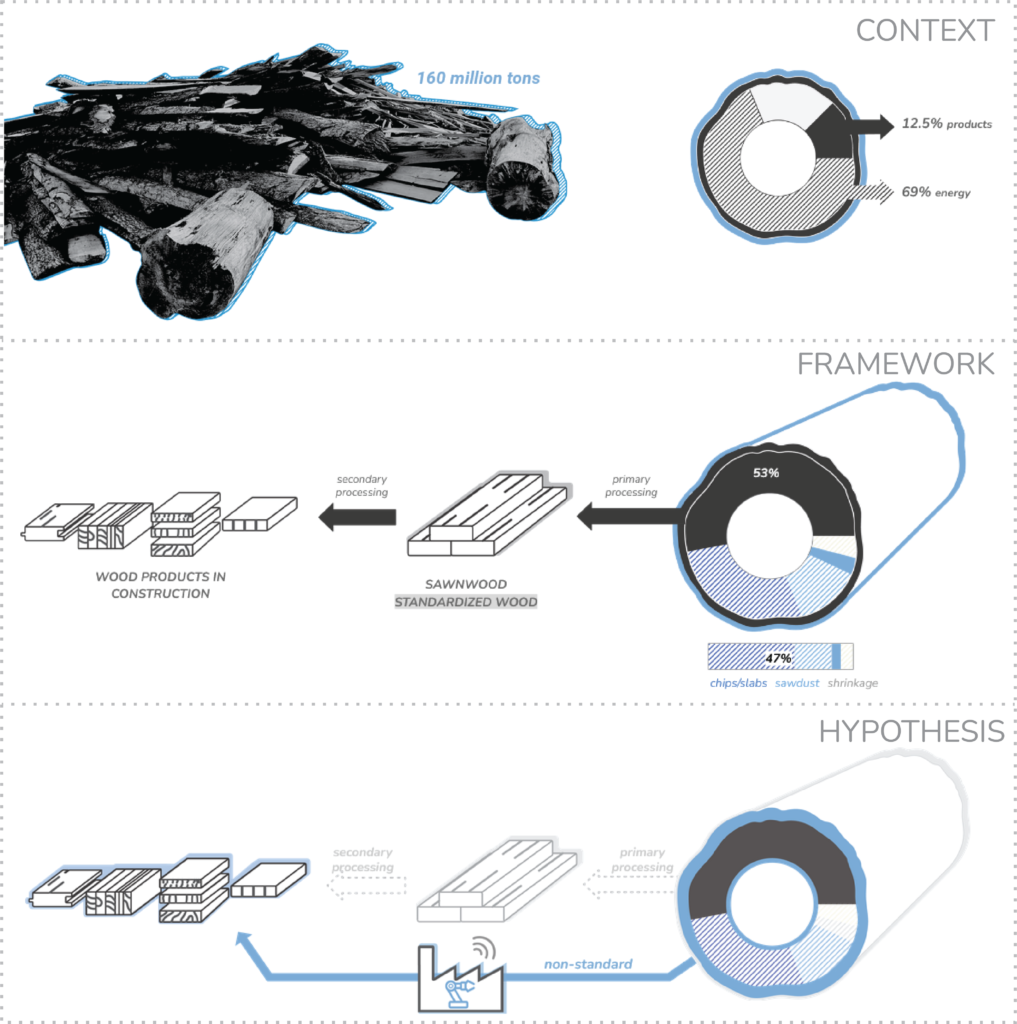
METHOD
There is a number of existing research addressing the challenges of working with non-standard wood. This research specifically targets the use of non-merchantable logs and sawmill offcuts. By examining the recent advancements in scanning technology, there is potential to scan and extract attributes from these specific types of non-standard wood so that this data is more easily available to architects and designers. The proposed method involves utilizing available scanning methods and leveraging the Speckle data platform to deliver these attributes efficiently.
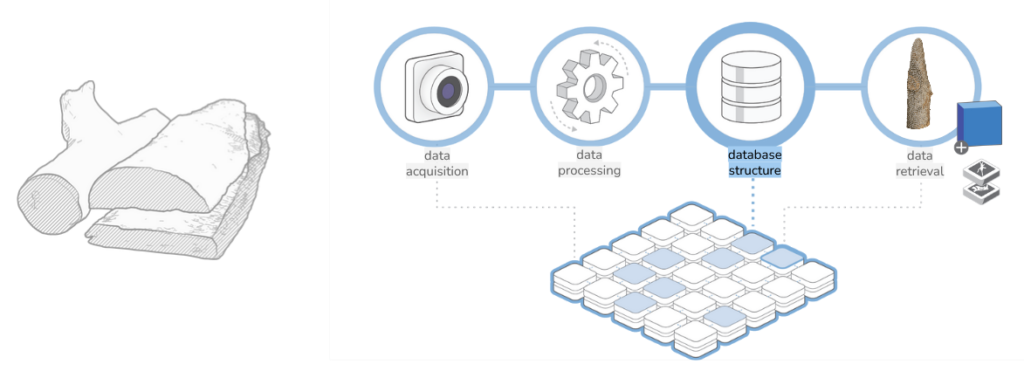
APPROACH
There are four projects in IAAC using the following types of non-standard wood. Each project has a list of required attributes, non-geometrical (NG) and geometrical. The research process begins by mapping out the scanning setup required to obtain the necessary data, followed by defining the final data format prior to uploading it to the database.
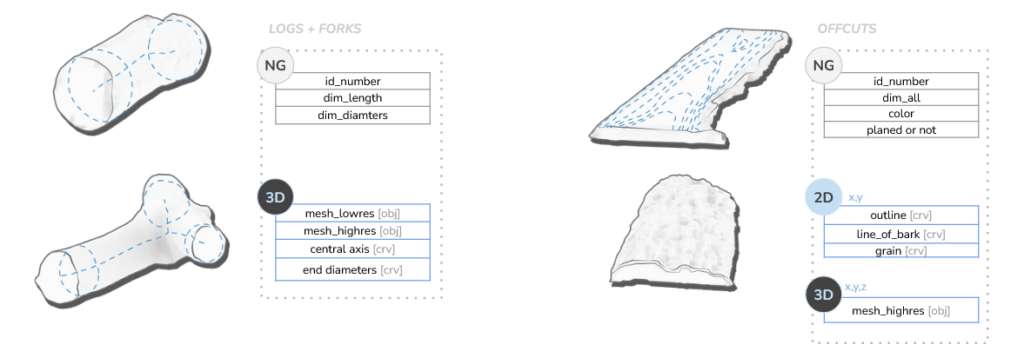
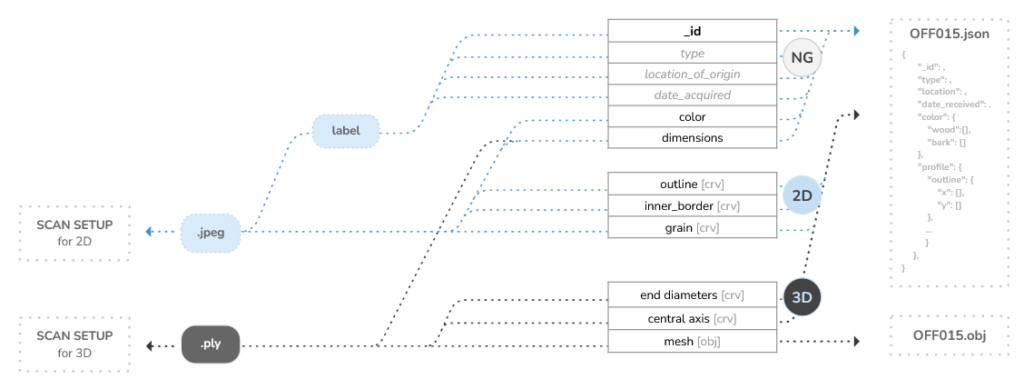
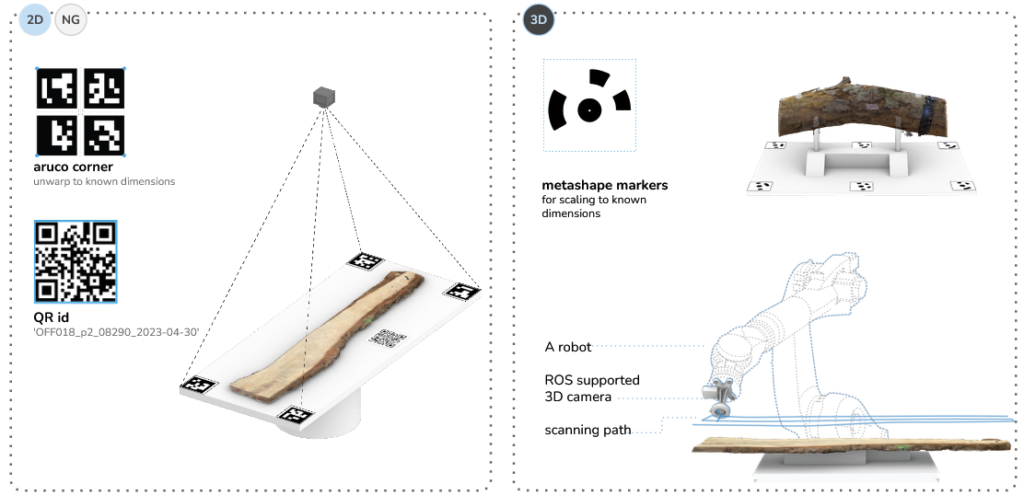
OUTPUT
The processed data is organized into distinct formats for offcuts and logs due to the limited overlapping attributes between them. Each scanned wood’s complete dataset is uploaded individually, enabling any user to access it using Grasshopper and Rhino software. The proposed data structure to enable querying in Speckle is a work around, appending the stream address of each upload to the combined dataset, and uploading the dataset to the query-stream (Stream_Q).

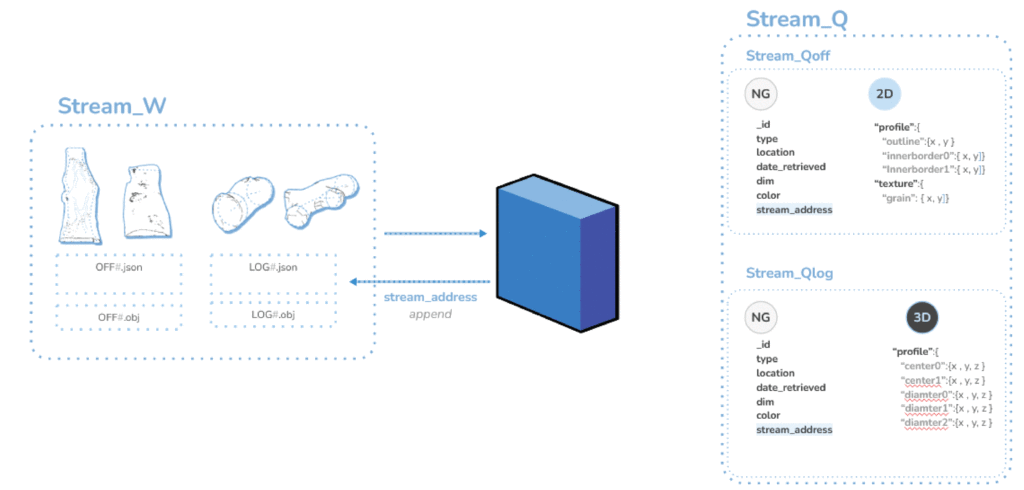
Demo
FUTURE OUTLOOK
When dealing with non-standard geometry and a material characterized by its heterogeneous nature, there exists a wide range of attributes that can be extracted and investigated. However, in order to enrich the database with additional attributes and accommodate a greater volume of data for designers, it is crucial to prioritize data integrity and strive to establish a relational database structure despite the apparent variations in attributes. In this research, a preliminary flexible data structure is introduced, highlighting the need to initiate data standardization. Additionally, it suggests the possibility of involving material sources, such as sawmills, in utilizing Rhino and Grasshopper as computational tools to enhance communication with architects and fabrication facilities through a common data platform like Speckle.

